Revision Notes: Mahatma Gandhi and the National Movement | History and Civics Class 10 ICSE PDF Download
| Table of contents |

|
| Mahatma Gandhi |

|
| Methods of Gandhi During Freedom Struggle |

|
| Non-Cooperation Movement |

|
| Civil Disobedience Movement |

|
Mahatma Gandhi
The period from 1919 to 1947 in the Indian National Movement is often referred to as the Gandhian Era because it was largely dominated by Mahatma Gandhi and his policies.
Gandhi: Early Life
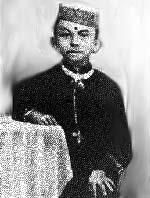
Birth and Education
- Gandhi was born in 1869 in Porbandar, located in the Kathiawar district of Gujarat.
- In 1888, he went to England to study law.
Struggle in South Africa
- From 1893 to 1914, Gandhi practiced law in South Africa, where he faced racial discrimination.
- This experience led him to become a leader in the fight against racist authorities in South Africa.
- He founded the Natal Indian Congress to oppose the racist policies of the South African government.
- It was during this time that Gandhi developed the concept of Satyagraha, a method based on truth and non-violence.
Return to India
- Gandhi returned to India in January 1915 and spent the next three years traveling extensively across the country.
- In 1917 and 1918, he became involved in three significant struggles: Champaran (Bihar), Ahmedabad, and Kheda (Gujarat).
Methods of Gandhi During Freedom Struggle
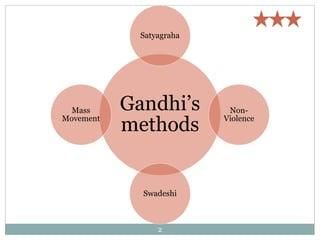
- Satyagraha: This method was founded on the principles of truth and non-violence. It was a courageous, honest, and peaceful approach to combat injustice. Gandhi made a clear distinction between passive resistance and Satyagraha. While passive resistance might involve the use of physical force, Satyagraha is against any form of violence.
- Principle of Non-violence: Gandhi’s concept of non-violence was rooted in the idea that no harm should be inflicted through words or actions. He believed that non-violence is a positive and active force.
- Swadeshi: Swadeshi advocates for the production of all essential goods within the country. Gandhi felt that using Swadeshi goods would lead India towards self-sufficiency and self-reliance. He emphasized the importance of the charkha (spinning wheel) and khadi (handspun cloth).
- Mass Movement: Gandhi transformed the Indian National Movement into a mass movement. He provided leadership to people from all walks of life, regardless of their caste, class, or religious differences.
Champaran Satyagraha (1917)
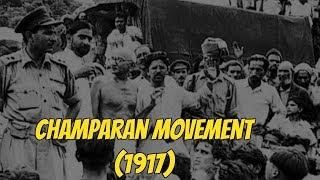
In Champaran, Bihar, peasants were legally obligated to cultivate indigo on 3/20 of their land and sell it at unreasonably low prices to European planters. Distressed by their plight, the indigo cultivators sought Gandhi's assistance. However, the district administration prohibited his entry. In response, Gandhi organized a Satyagraha, leading to an inquiry into the hardships faced by the indigo farmers.
Ahmedabad Satyagraha (1918)
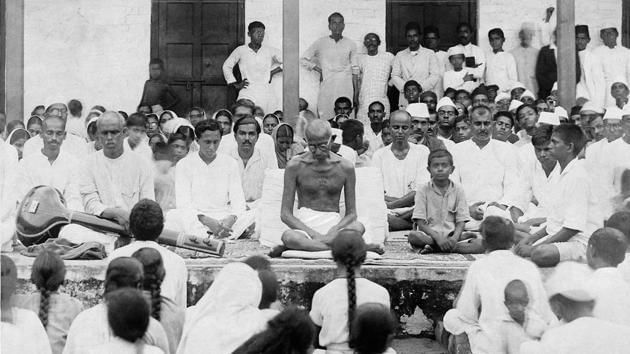
In Ahmedabad, Gandhi supported mill workers in a strike demanding higher wages from mill owners. By going on a hunger strike, he exerted pressure on the mill owners, who eventually agreed to a 35% wage increase for the workers.
Kheda Satyagraha (1918)
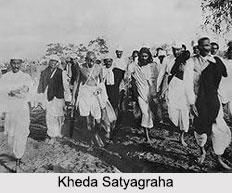
In 1918, the crops in Kheda failed, and the farmers were unable to pay the land revenues to the government. They appealed to the government to waive off their dues, but their requests were ignored. Gandhi took up the cause of the Kheda peasants and initiated Satyagraha. Eventually, the government was compelled to address their demands and reached a settlement with the peasants. Sardar Vallabhbhai Patel also played a crucial role in the Kheda Satyagraha.
These struggles brought Gandhi closer to the masses.
Non-Cooperation Movement
Background: The Congress had supported the British government during the First World War, believing that India would be granted self-government in return for its contributions of men and materials. However, after the war, Britain enacted repressive laws like the Rowlatt Act to suppress the Indian National Movement. In response to this betrayal, the Congress decided to launch the Non-Cooperation Movement.
Factors Leading to the Launch of the Non-Cooperation Movement
Khilafat Movement:- The Sultan of Turkey was seen as the 'Caliph', the religious leader of Muslims, as many Muslim holy sites were in the Turkish Empire. During World War I, Britain fought against Turkey, causing anger among Indian Muslims.
- In response, Indian Muslims, led by Muhammad Ali and Shaukat Ali, started the Khilafat Movement. They had a three-point program demanding the preservation of the Ottoman Caliph's empire, sufficient territories for the Caliph to protect the Islamic faith, and Arab lands remaining under Arabic rule.
- Gandhi saw the Khilafat Movement as a chance to unite Hindus and Muslims. He advised the Khilafat Committee to cooperate with the government.
- The Khilafat Non-Cooperation Movement officially began on August 31, 1920.
Rowlatt Act:
- To curb rising national sentiments, the government enacted the Rowlatt Act, allowing imprisonment without trial. It granted powers to:
- Arrest individuals without warrants
- Try individuals in secrecy
- Suspend the right of Habeas Corpus
- Gandhi initiated a movement against this unjust Act, leading to shop closures, strikes in railway workshops, and rallies in various cities.
- Alarmed by the widespread participation, the government arrested prominent leaders in Amritsar and barred Gandhi from entering Delhi.
- On April 10, 1919, police fired on a peaceful procession, prompting people to retaliate by attacking banks and railway stations.
Jallianwala Bagh Tragedy
- On 13 April, a large crowd assembled at Jallianwala Bagh protesting against the arrest of some of their leaders who criticised the government for passing the Rowlatt Act. General Dyer blocked the exit of the bagh and fired on the unarmed crowd. This resulted in the death of about thousand people.
- The killing of innocent people at the Jallianwala Bagh shocked the entire nation. People in many north Indian towns protested against the brutal killings at Jallianwala Bagh. The government brutally suppressed these protests.
Objectives of the Non-Cooperation Movement
At the Kolkata Session in 1920, the Congress passed the resolution of the Non-Cooperation Movement. Its main objectives were
- To attain self-government within the British Empire
- To force the government to annul the Rowlatt Act
- To force the British to restore the old status of the Sultan of Turkey
Programs of the Non-Cooperation Movement
The Non-Cooperation Movement focused on swadeshi (self-reliance) and boycott initiatives. Here are some of the key programs:
- Boycotting government-run schools, colleges, and courts.
- Rejecting foreign goods.
- Resigning from nominated positions in local bodies.
- Surrendering titles and honorary positions.
- Promoting the use of swadeshi and khadi clothing.
- Establishing national schools and colleges in India as alternatives to government institutions.
- Aiming to unify Hindus and Muslims and working towards the upliftment of women.
Course of the Movement
The Non-Cooperation Movement witnessed enthusiastic participation from the public.
- Prominent lawyers like Dr. Rajendra Prasad and Motilal Nehru abandoned their legal practices.
- Students left government-run educational institutions.
- The Indian National Congress boycotted elections to the legislatures.
- People began spinning cloth using the charkha (spinning wheel).
- Jamia Millia Islamia was founded as a national university.
- Notable figures like Rabindranath Tagore renounced their titles and awards.
- Shops selling foreign goods and liquor were picketed.
- During the visit of the Prince of Wales to India in 1921, people protested against his visit.
Repression of the Movement
- The government responded with severe repression against the movement.
- All major leaders, except for Gandhi, were arrested and imprisoned.
- Processions and public meetings were prohibited.
- The Khilafat movement and various volunteer organizations affiliated with the Congress were declared illegal.
Suspension of the Non-Cooperation Movement
- Gandhi suspended the Non-Cooperation Movement following the violent incident at Chauri Chaura in Uttar Pradesh.
- A group of around 3,000 people had marched to the Chauri Chaura police station, and after being fired upon, the mob retaliated violently, setting the police station on fire and killing 22 police officers.
- This incident shocked Gandhi, who was committed to achieving freedom through non-violent means.
- As a result, he withdrew the movement on February 12, 1922, urging Congress members to focus on constructive activities such as promoting Hindu-Muslim unity and addressing untouchability.
- Gandhi's decision to suspend the movement faced criticism from several leaders, including Motilal Nehru, Lala Lajpat Rai, and S. C. Bose.
Effects of the Non-Cooperation Movement
The Non-Cooperation Movement had several significant effects on the Indian national movement:
- Mass Participation: It transformed the national movement into a mass movement, with people from all professions and walks of life participating actively.
- Desire for Freedom: The movement instilled a strong desire for freedom among the people, inspiring them to challenge colonial rule.
- Hindu-Muslim Unity: It fostered unity between Hindus and Muslims, strengthening the collective struggle against British rule.
- Social Reforms: The movement also promoted social reforms, addressing various social issues.
- Boost to Local Industries: The concepts of Swadeshi and the boycott of foreign goods gave a boost to handicraft and local industries.
However, the movement did not achieve its main objectives, such as attaining swaraj (self-rule), obtaining an apology for the Jallianwala Bagh incident, and resolving the Khilafat issue.
Civil Disobedience Movement
In 1931, Gandhi initiated the Civil Disobedience Movement. Several factors contributed to the launch of this movement:
Simon Commission
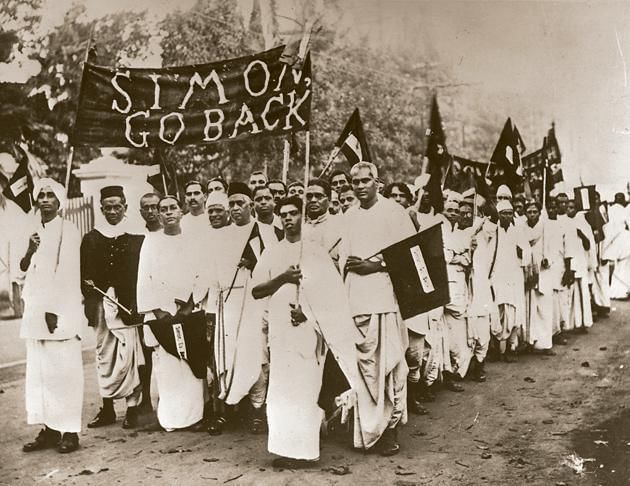
- The British Government set up a committee of seven people, known as the Simon Commission, to examine the need for further constitutional reforms in India.
- The Commission faced opposition from Indians because it consisted entirely of British members, with no Indians included.
- During the 1927 session in Chennai, the Congress decided to boycott the Commission at every stage. The Muslim League and the Hindu Mahasabha supported the Congress's decision.
- Wherever the Commission went, it was met with protests and hartals. The government responded with brutal repression to suppress the popular opposition. In Lahore, Lala Lajpat Rai was severely beaten by the police while protesting against the Commission. He later died from the injuries sustained during the police lathi charge.
Recommendations of the Simon Commission
- To abolish dyarchy and grant autonomy to Provincial governments, while giving the government unlimited powers in certain areas like internal security.
- To increase the number of members in the Provincial Legislative Council.
- To integrate princely states into the federal government at the centre.
- To empower the Governor General to select and appoint his own cabinet members.
- To retain British soldiers and officers in Indian regiments.
- To place High Courts under the control of the Central Government.
Nehru Report
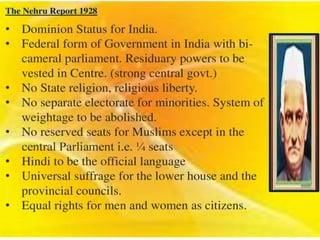
In 1928, Lord Birkenhead, the Secretary of State for India, defended the exclusion of Indians from the Simon Commission by claiming that Indians were not united and therefore could not agree on a reform scheme. In response to this, an All Parties Conference was organized to propose reforms for the country. This conference brought together various groups, including Liberal and Assertive Nationalists, leaders of the Muslim League, Hindu Mahasabha, and representatives of the Depressed Classes. Motilal Nehru was appointed as the Chairman of the Committee. The report submitted by this committee came to be known as the "Nehru Report." It called for Dominion Status for India and sought to address the communal issues facing the country.
Declaration of Poorna Swaraj
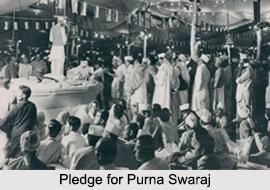
The Congress, during the Kolkata Session, urged the government to either accept the Nehru Report or brace for mass protests. When the government rejected the Report, the Congress proclaimed 'Poorna Swaraj' or complete independence from British rule as its primary goal. This resolution was passed at the Lahore Session of 1929.
Jawaharlal Nehru, the President of the Congress Session in 1929, led a procession in Lahore and hoisted the tricolour. The following programmes were adopted by the Congress Working Committee:
- Preparation for the Civil Disobedience Movement
- Declaring Poorna Swaraj or complete independence as the main aim of the Indian National Movement
- Observing 26 January as Poorna Swaraj Day or Independence Day every year
- Resignation of all members from the legislatures
The Civil Disobedience Movement
The Civil Disobedience Movement commenced with the Dandi March led by Gandhi. He walked from Sabarmati Ashram to Dandi, a small village on the Gujarat coast, to make salt in defiance of the Salt Law. Gandhi chose to break the Salt Law because the Salt Tax impacted all sections of Indian society, particularly the poor. The act of breaking the Salt Law at Dandi symbolized the start of the Civil Disobedience Movement.
During the early 20th century, the 'charkha' became a powerful emblem of the Indian freedom movement.
Programmes of the Movement
- Defying the Salt Law by making salt
- Boycotting liquor
- Boycotting foreign cloth and other foreign goods
- Non-payment of taxes and revenues
The Civil Disobedience Movement differed from the Non-Cooperation Movement in that it included non-payment of taxes and land revenues, as well as the violation of various laws.
Progress of the Civil Disobedience Movement
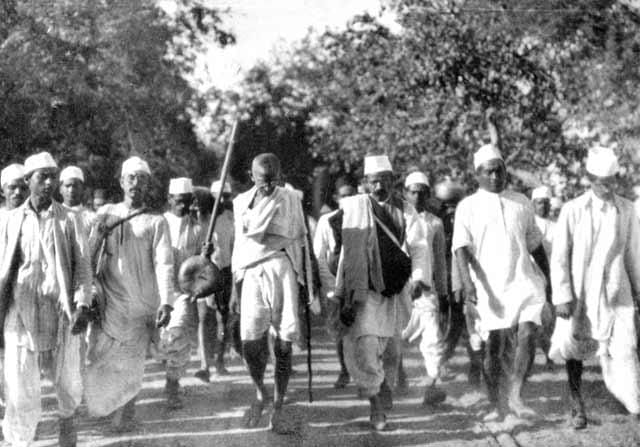
The Civil Disobedience Movement witnessed widespread participation across the country. People openly violated the Salt Laws in various regions, while in Maharashtra, Karnataka, and the Central Provinces, individuals refused to comply with the Forest Laws. In eastern India, there was a collective refusal to pay the chaukidari tax.
- Boycotts and Demonstrations: People boycotted foreign goods, organized demonstrations, and picketed liquor shops as part of their protest against British rule.
- Khilafat Movement: The Khilafat Movement, which aimed to protect the Ottoman Sultan's authority after World War I, also gained momentum during this period, especially in regions like Uttar Pradesh.
- Non-violent Struggles: In northwestern India, under the leadership of Khan Abdul Ghaffar Khan, the Pathans engaged in a non-violent struggle. Ghaffar Khan, also known as the Frontier Gandhi, organized the Khudai Khidmatgars, a society committed to social service and non-violence, and the group became popularly known as the Red Shirts.
- Expansion to Eastern India: The movement also gained traction in the eastern parts of India, with people from Manipur and Nagaland joining the struggle against British rule.
Government Repression
The British government responded with brutal repression, imprisoning over 90,000 Satyagrahis and several Congress leaders. The Indian National Congress was declared illegal, and restrictions were imposed on nationalist press.
- Police Actions: In a notable incident, when Pathan protesters demonstrated against the arrest of Ghaffar Khan, some police officers refused to open fire on the protesting mob and faced severe punishment for their actions. In contrast, protesters in Delhi and Kolkata faced police gunfire during their demonstrations.
First Round Table Conference
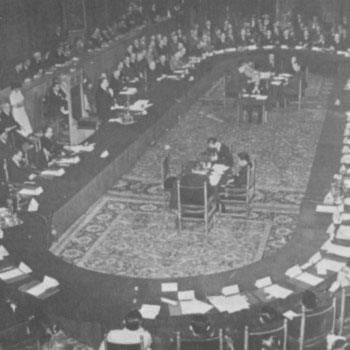
The First Round Table Conference took place in London from November 12, 1930, to January 19, 1931. The Indian National Congress boycotted the Conference because it opposed the Simon Commission. However, other political parties and interest groups participated in the Conference.
Gandhi-Irwin Pact
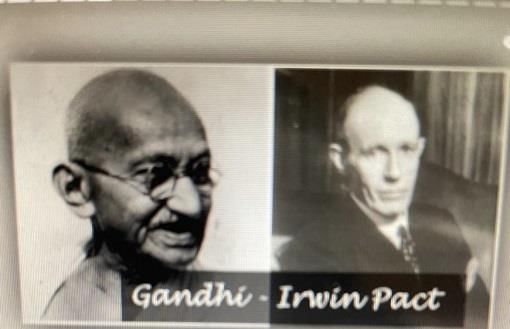
The British government initiated negotiations with Mahatma Gandhi, who was imprisoned at the time, to bring an end to the Civil Disobedience Movement. This led to the signing of the Gandhi-Irwin Pact between Lord Irwin, the Viceroy of India, and Gandhi. The terms agreed upon by the government included:
- Withdraw all ordinances and end prosecutions.
- Release all political prisoners, except those involved in violence.
- Allow peaceful picketing of shops selling liquor and foreign clothing.
- Restore confiscated properties of Satyagrahis.
- Permit coastal residents to make and manufacture salt.
The Congress agreed to:
- Suspend the Civil Disobedience Movement.
- Participate in the Second Round Table Conference.
- Not press for investigations into police excesses.
Second Round Table Conference
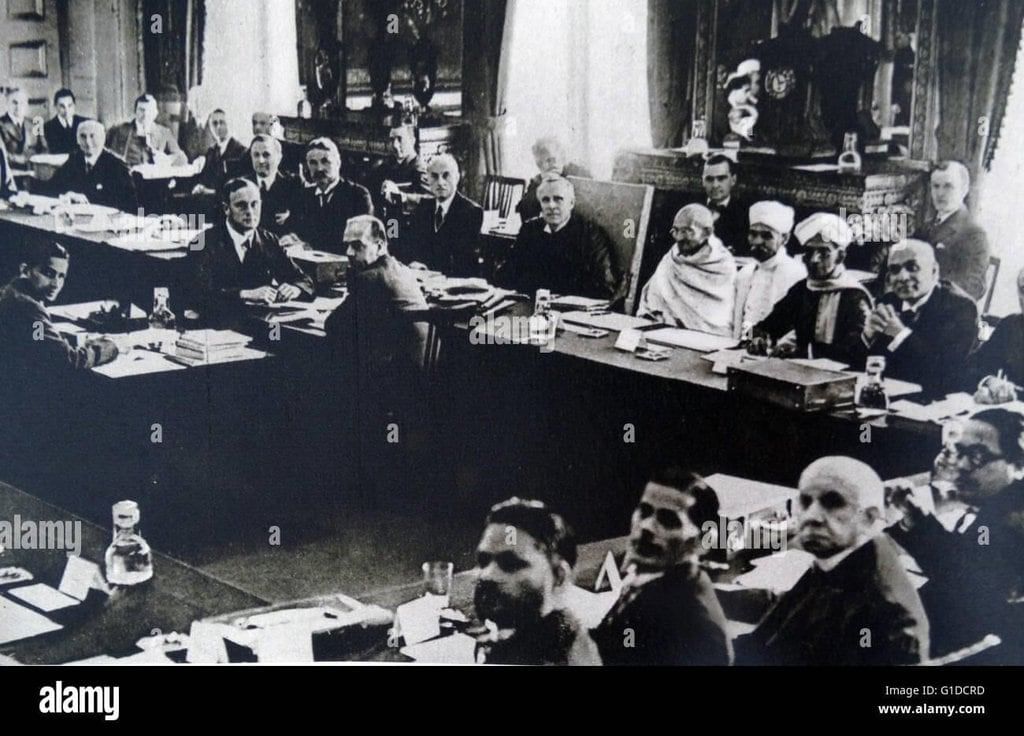
- The Second Round Table Conference took place from September 7 to December 1931 and was attended by Mahatma Gandhi.
- During this conference, the British government refused to grant Dominion Status to India. The issue of separate electorates was raised not only by Muslims but also by the depressed classes, Anglo-Indians, Indian Christians, and Europeans.
Continuation of the Civil Disobedience Movement
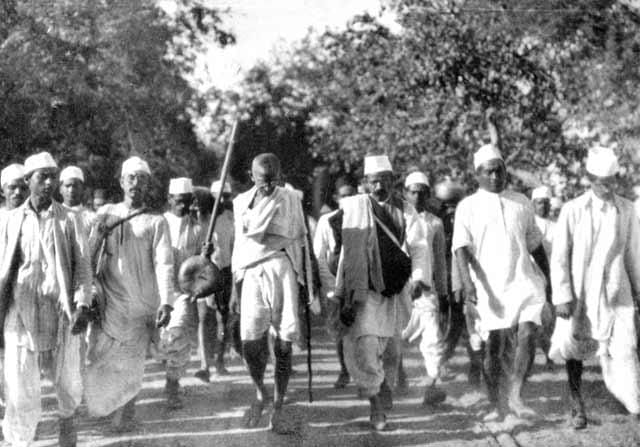
- After the Second Round Table Conference proved disappointing, Gandhi returned to India. At the same time, the Great Depression of 1929-30 severely impacted Indian farmers.
- Gandhi sought discussions with Viceroy Willingdon, but his request was declined.
- In January 1932, the Congress passed a resolution to renew the Civil Disobedience Movement.
- Gandhi was arrested, the Congress was declared illegal, and the government was given special powers through ordinances.
- The government responded with brutal suppression of the movement, which gradually died down.
Effects of the Civil Disobedience Movement
- Although the Civil Disobedience Movement did not immediately lead to the country's freedom, it significantly deepened the struggle for independence.
- The movement fostered a lasting sense of patriotism among the people, which persisted until the country achieved independence.
- It broadened the base of the freedom struggle, with participation from various classes, including workers, merchants, tribal communities, and women.
- New methods of propaganda were popularized during the movement, such as the 'Prabhat Pheris,' where groups of men and women would sing patriotic songs while roaming villages and towns.
- The movement also initiated many social reforms, including granting depressed classes access to temples and wells.
- Women played a significant role in the movement, becoming equal partners in the struggle for freedom.
- In response to the movement, the government recognized the need for constitutional reforms and passed the Government of India Act, 1935, which introduced principles of federation and provincial autonomy.
- The Congress party achieved significant success in elections to Legislative Assemblies in the following year and to Provincial Legislative Assemblies in 1937.
In summary, the Civil Disobedience Movement sparked national sentiments among the people and prepared them for future movements against British rule.
|
28 videos|103 docs|27 tests
|
FAQs on Revision Notes: Mahatma Gandhi and the National Movement - History and Civics Class 10 ICSE
| 1. What were the key principles of Mahatma Gandhi's methods during the Indian freedom struggle? |  |
| 2. What was the significance of the Non-Cooperation Movement initiated by Gandhi? |  |
| 3. How did the Civil Disobedience Movement differ from the Non-Cooperation Movement? |  |
| 4. What impact did Gandhi's methods have on the Indian independence movement? |  |
| 5. What role did the concept of Satyagraha play in Gandhi's activism? |  |















